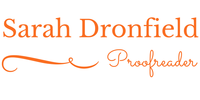|
This is the first of two posts in which I will discuss dialogue punctuation. This first part will deal with the basic rules of punctuating dialogue. The second part will deal with more complex dialogue punctuation, when there aren’t any hard and fast rules but rather a number of style choices.
The Basic Rules The rules outlined in this post are non-negotiable. Well, I say that, but you may have read some novels that use no speech marks for dialogue and therefore break all of the following rules. Some readers like that, others get used to it, and some dislike it and refuse to read such books. So be aware that it might put some readers off if you decide to go down that road. Also bear in mind that you need to know the rules inside out before you can confidently and effectively break them. Please excuse the incredibly boring examples of dialogue that follow; I’m keeping it simple to focus on the punctuation. Dialogue tags/speech tags
If you want your speech tag to be in the middle of a sentence of dialogue, then a comma is needed before the closing quote mark in the first bit of dialogue and another after the speech tag:
Action beats When dialogue is followed by an action (or nothing at all), a full stop is used (unless a question mark or exclamation mark is required).
Things to note when using speech tags and action beats: • A dialogue tag that follows speech begins with a lowercase letter because it’s all part of the same sentence, which just happens to include some dialogue. This is the case even when the speech ends with a question mark or exclamation mark.
The vocative comma When speaking, a character often addresses another character by their name. When they do, a vocative comma is required. It goes after the name if the name opens the dialogue:
The vocative comma is used however the person is being addressed: by their name, nickname, job title, an honorific or some other form of address:
Lengthy dialogue If a character speaks at length and continues into a second or third paragraph, the only paragraph that has a closing quote mark is the final one. But each new paragraph within the speech starts with an opening quote mark to show that the speech is continuing. The example below isn't exactly lengthy dialogue, but you get the picture ... 'I don't know what to write. What should I write? 'I know: I can write about what happened last week; that was amazing! 'But where do I start ...' That sums up the basic rules of punctuating dialogue. Part 2 will discuss things such as double and single quote marks, interrupted speech, pauses and stuttering, for which there are no rules but style choices need to be made, and some of these may be determined depending on whether you are using British or American English.
0 Comments
Your comment will be posted after it is approved.
Leave a Reply. |


